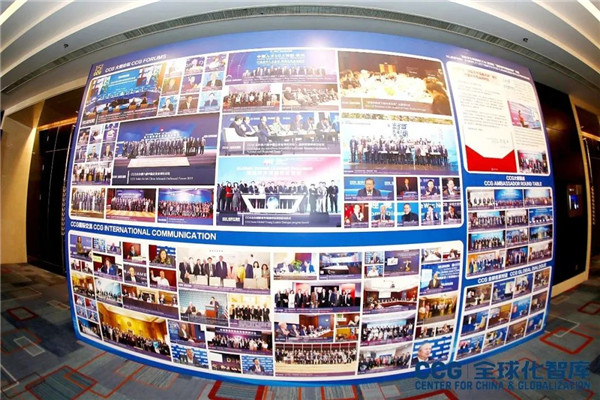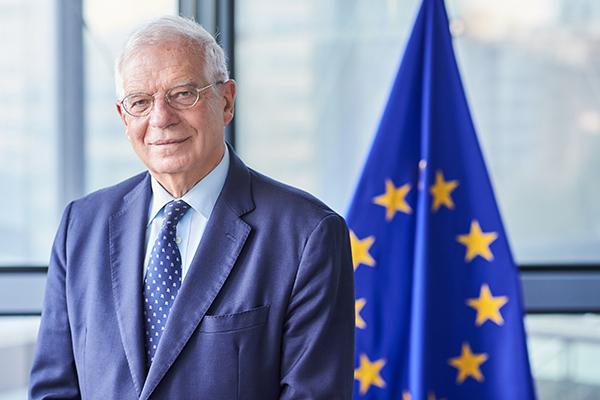Wang Huiyao: Business cooperation could reset US-China ties
January 18 , 2025From SCMP, 2025-1-18
■ China can take a lesson from 1980s Japan, which defused bilateral frictions by strategically pivoting towards direct investment in US manufacturing.
By Wang Huiyao | Founder of the Center for China and Globalization(CCG)
As US president-elect Donald Trump prepares to take office on January 20, a pivotal moment in US-China relations is unfolding. One day before his inauguration, TikTok faces a shutdown under legislation requiring its Chinese parent ByteDance to divest or cease its US operations.
Trump’s declaration last month that the United States and China “can together solve all the world’s problems” signals a reset in bilateral relations. He showed he was open to practical cooperation in his first term, notably with the phase-one trade agreement, which established frameworks for financial services and intellectual property protection, and expanded economic engagement.
Trump’s new team reflects his commercial priorities: David Perdue, with extensive Asian business experience, as US ambassador to China; Wall Street veteran Scott Bessent as Treasury secretary; Jamieson Greer as trade representative; and Tesla chief Elon Musk – all signalling a business-focused approach.
Business-driven diplomatic breakthroughs are not without precedent. The resolution of US-Japan trade tensions in the 1980s offers instructive parallels. In the 1980s, Japan defused bilateral frictions through a strategic pivot towards direct investment in American manufacturing. Against strict US automotive import restrictions, Toyota’s 1985 decision to establish a factory in Kentucky proved transformative, creating jobs directly and throughout the local supply chain. Honda’s investment in Ohio reinforced this model, showing how production localisation could address trade imbalances while creating local employment.
Through this “Made in the USA” strategy, Japan balanced its trade surplus while boosting US economic growth. Though China’s economic power today far exceeds Japan’s in the 1980s, the lesson is clear: strategic investment transformed US-Japan relations. The same approach could stabilise US-China ties today.
Chinese companies in the US show how this investment-led approach can work. Fuyao Glass Industry Group’s US$1 billion commitment to Ohio represented more than a manufacturing investment – it has created thousands of jobs while establishing a model for Chinese industrial expertise to enhance American productivity.
BYD’s electric bus facility in Lancaster, California is another strategic milestone. Backed by over US$250 million in investment in North America and employing more than 750 workers, it is the first Chinese vehicle manufacturer in the US, bringing both clean energy technology and employment opportunities.
CRRC Corp’s engagement with Chicago offers another compelling case. After securing a contract to supply railcars to the Chicago Transit Authority in 2016, CRRC invested US$100 million into establishing a manufacturing facility, creating hundreds of jobs.
This momentum looks set to accelerate, particularly in the strategic new-energy sector where Chinese companies are bringing advanced manufacturing capabilities to the US market. Contemporary Amperex Technology (CATL), the world’s largest battery manufacturer, has a technology licensing partnership with Ford’s Michigan plant and is now working on the same with Tesla’s Nevada facility, notwithstanding the fact it is now on the US government’s list of Chinese companies linked to the military.
CATL’s founder and chairman Robin Zeng recently expressed strong interest in building manufacturing plants in the US, aligning with Trump’s stance that Chinese companies should “build plants here” and “hire our workers”. The timing of these signals suggests Chinese businesses see opportunities to expand operations in the US.
It goes both ways. American companies have found remarkable success in China’s vast market. In 2023, China accounted for 63.8 per cent of Qualcomm’s global sales revenue, 26.8 per cent of Intel Corp’s, and about 33 per cent of General Motors’. Tesla’s performance stands out: last year, it sold more than 657,000 cars in China, an 8.8 per cent increase and a record high.
The inclusion of Tesla’s cars in government procurement lists is a further sign of China’s openness to foreign businesses. Apple’s dominance in China’s premium market is also notable; the country is Apple’s second-largest market for its smartphones. Starbucks added 290 new stores in China in the last three months of its financial year ended September 30, entering 78 new county-level markets.
The scale of US-China business engagement is substantial. There are estimated to be more than 73,000 US companies in China with investments exceeding US$1.2 trillion, spanning electronics, automotive, consumer goods and financial services. From 2009 to 2023, while US global exports grew by 91.1 per cent, its exports to China increased by 112.6 per cent.
Growing business ties are also evident at the recent CES trade show in Las Vegas, where the more than 1,300 Chinese companies taking part accounted for 27 per cent of all exhibitors. These success stories underscore how commercial engagement can strengthen bilateral ties even amid broader economic tensions.
Trump’s request to the US Supreme Court to halt any legal action on TikTok until he enters office is a signal that the ban may be reconsidered and raises the possibility of breakthrough cooperation in digital commerce. China’s recent visa liberalisation, benefiting citizens from 59 countries including the US, also signals a more open stance.
There is potential for even greater opening up, particularly in allowing more international tech companies access to the Chinese market. Major US firms like Google, Microsoft, Meta and others could benefit from expanded market access and create opportunities for bilateral digital cooperation.
The scope for cooperation can extend well beyond the traditional sectors into the emerging field of artificial intelligence (AI). As frontier AI competition intensifies, shared security concerns can create common ground. Trump’s deal-making instincts may give rise to unique opportunities for targeted cooperation in AI safety and governance frameworks.
Trump’s commercial mindset, his business-oriented team and Chinese enterprises’ growing investment ambitions point to a clear path: strategic investment and localised production can transform economic tensions into shared prosperity. These business-driven approaches may offer the most practical way to rebuild trust between the world’s two largest economies, solving problems through commercial cooperation, one deal at a time.
From SCMP, 2025-1-18
Topical News See more






